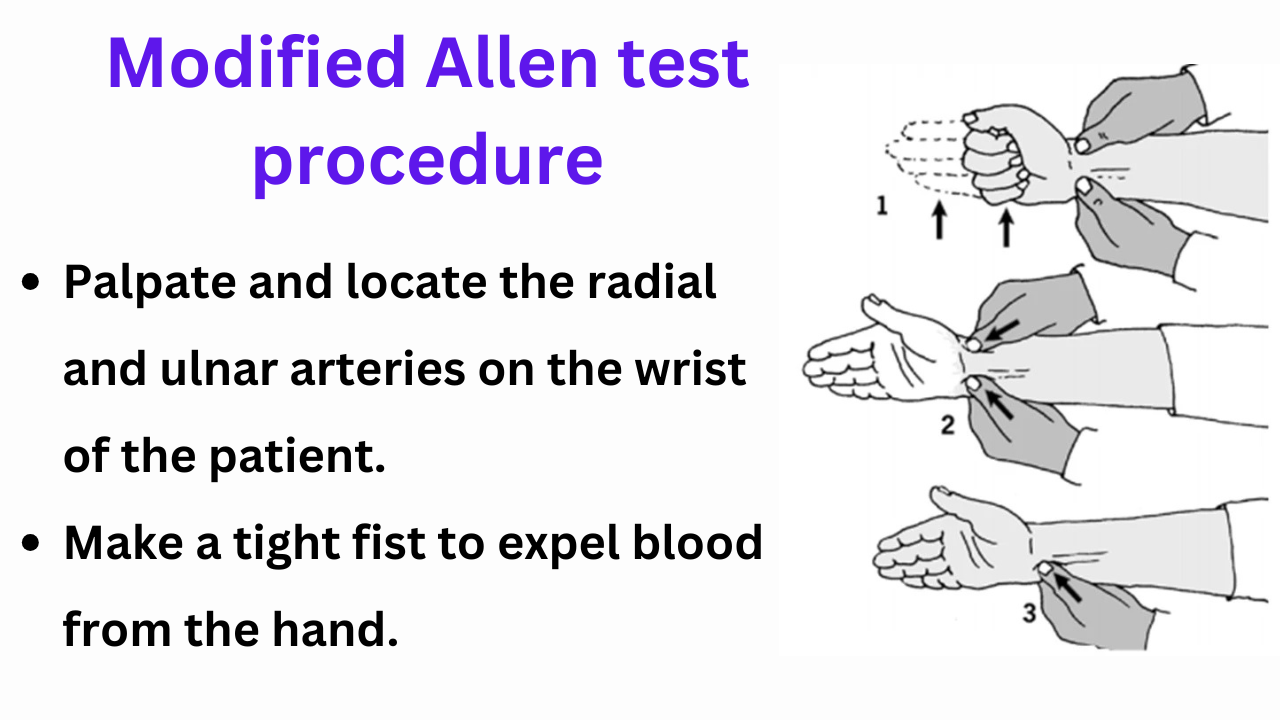The Modified Allen Test is a diagnostic procedure used to evaluate the blood supply to the hand, specifically by assessing the patency of the radial and ulnar arteries.
It is a modified version of the original Allen test and is commonly used before procedures such as arterial cannulation or radial artery harvesting for coronary artery bypass grafting (CABG).
Modified Allen test procedure
- Explain the procedure to the patient to ensure their cooperation. Sit them comfortably with their hand palm-up on a flat surface.
- Palpate and locate the radial and ulnar arteries on the wrist of the patient.
- Make a tight fist to expel blood from the hand. Use your fingers to apply pressure to both the radial and ulnar arteries, occluding blood flow to the hand.
- Finally, ask the patient to open their hand slowly, keeping it relaxed. The hand should appear pale or blanched because blood flow has been restricted.
- While maintaining pressure on the radial artery, release the ulnar artery and observe the patient’s hand.
Modified Allen test result interpretation
- Normally, the hand should “pink up” (color returns) within 5-7 seconds, indicating sufficient blood flow through the ulnar artery.
- If the color does not return within 7-10 seconds, this may indicate inadequate collateral circulation through the ulnar artery, suggesting that the radial artery should not be used.
